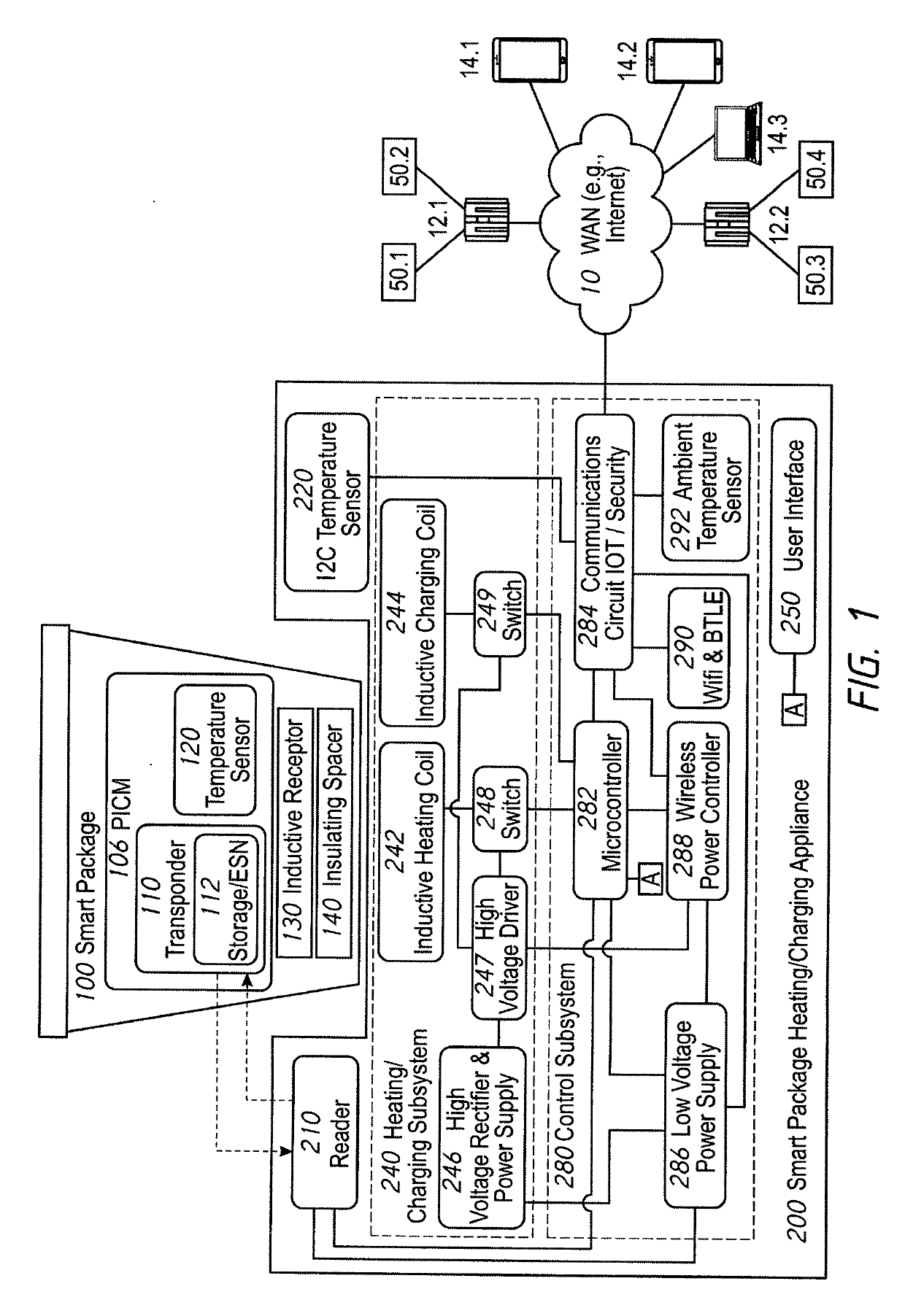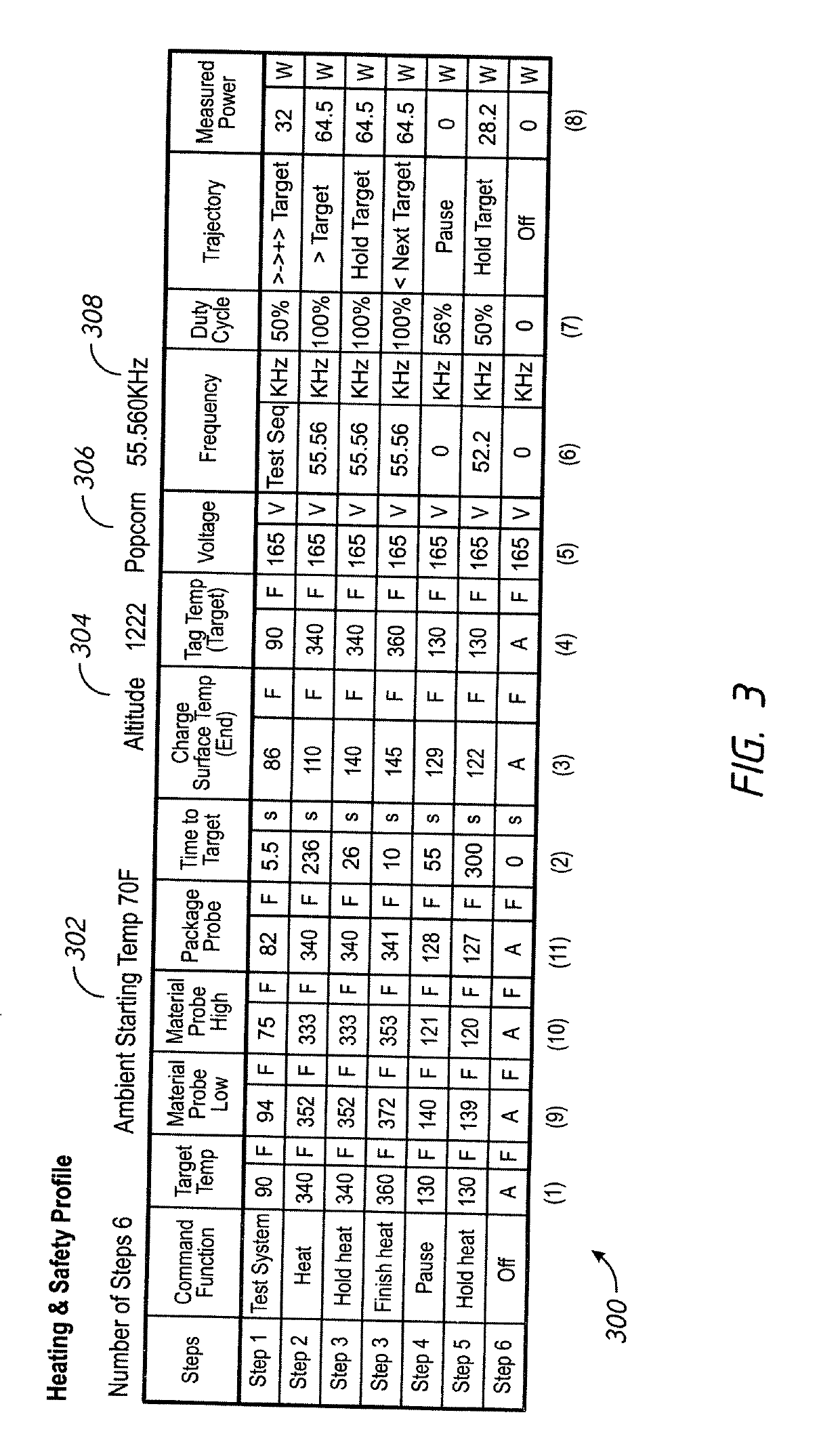Smart packages systems and methods
a package and intelligent technology, applied in the field of smart or intelligent packages, can solve the problems of insufficient customization of the heating function the inability to properly customize the heating of the cooking appliance, and the inability to heat the package contents, so as to improve the product and heating safety, improve the authentication process, and improve the effect of product and heating safety
- Summary
- Abstract
- Description
- Claims
- Application Information
AI Technical Summary
Benefits of technology
Problems solved by technology
Method used
Image
Examples
Embodiment Construction
[0067]FIG. 1 is a block diagram of example components and their functional relationships for an example smart appliance and smart package. The smart package 100 may be a sealed package having a tamper-proof lid. The smart package 100 may include a package intelligence and communication module (PICM) 106, which may include a transponder 110 having a storage or memory 112 containing a stored unique identifier, such as an electronic serial number (ESN), and other data previously stored during a package manufacturing, test, calibration or initialization operation, as will be explained. A temperature sensor 120 may be disposed on or within the smart package 100. The smart package 100 may include an inductive receptor 130 and an insulating spacer 140 disposed therein.
[0068]According to an aspect of the disclosure, the transponder 110 may be a near-field communication tag, or more particularly, an electromagnetic energy (EME) energized RFID tag, or may be a light-energized microtransponder...
PUM
 Login to View More
Login to View More Abstract
Description
Claims
Application Information
 Login to View More
Login to View More - R&D
- Intellectual Property
- Life Sciences
- Materials
- Tech Scout
- Unparalleled Data Quality
- Higher Quality Content
- 60% Fewer Hallucinations
Browse by: Latest US Patents, China's latest patents, Technical Efficacy Thesaurus, Application Domain, Technology Topic, Popular Technical Reports.
© 2025 PatSnap. All rights reserved.Legal|Privacy policy|Modern Slavery Act Transparency Statement|Sitemap|About US| Contact US: help@patsnap.com



